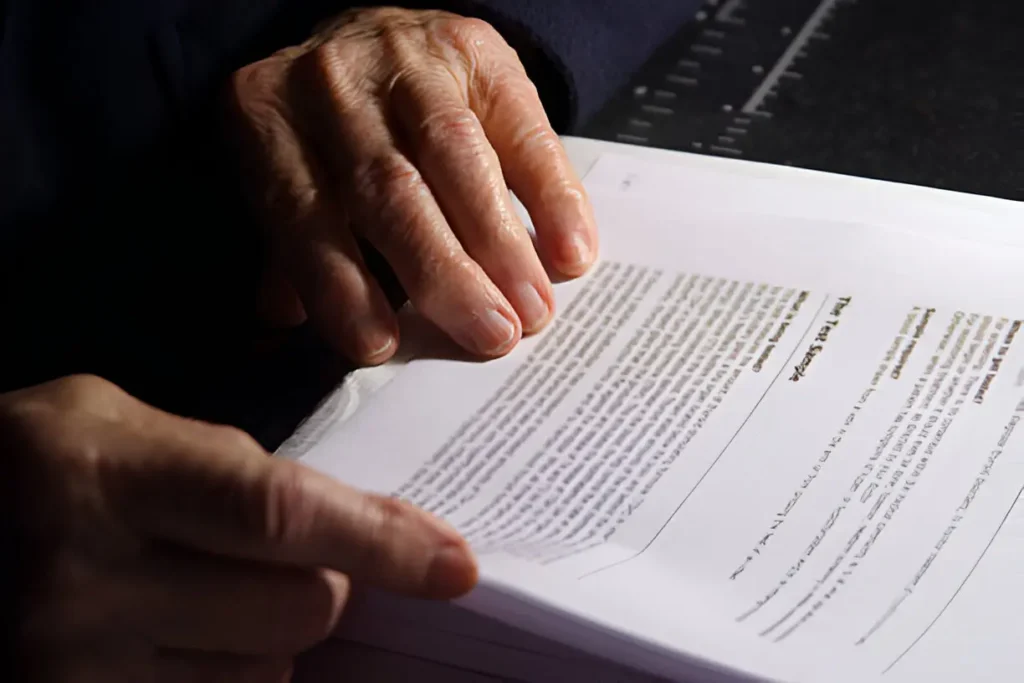How to Start a Research Paper: - Starting a research paper can be intimidating, especially when you don’t know where to begin. Whether you're a high school student writing your first term paper or a college student preparing for a major thesis, the process can seem overwhelming. But don't worry—every great paper starts with a simple plan.
This comprehensive guide breaks down the research paper writing process into manageable, step-by-step actions to help you start strong, stay organized, and write with confidence. Let’s dive in!
How to Start a Research Paper
1. Understand the Assignment

Before anything else, take time to carefully read the assignment sheet or project guidelines provided by your instructor. This is a critical first step that is often rushed or skipped.
Look for the following details:
- Purpose of the paper: Is it persuasive, analytical, or informative?
- Required formatting: MLA, APA, Chicago, etc.
- Word or page count
- Number and types of sources required
- Due date and submission format
If anything is unclear, don’t hesitate to ask your teacher or professor for clarification. It’s better to ask early than to fix problems later.
2. Choose a Manageable Topic
Picking the right topic can save you hours of frustration later. A good research topic should be:
- Interesting to you – You'll be spending a lot of time with this subject.
- Relevant to your course – Stay within the scope of your assignment.
- Focused but flexible – Broad enough to find sources, narrow enough to explore in depth.
Example: Instead of choosing a broad topic like “climate change,” narrow it to something like “the impact of climate change on small island nations.”
If you're stuck, brainstorm ideas from class discussions, your textbook, or recent news articles. Keep a list and choose the one that excites you the most.
3. Do Preliminary Research
Once you’ve selected a topic, do some quick background research to get a general understanding of the subject. Use sources like:
- Encyclopedias
- Credible websites (such as .edu, .org, or .gov)
- Academic journals or databases (Google Scholar, JSTOR, EBSCOhost)
Preliminary research helps you:
- Learn key terminology
- Identify major debates or gaps
- Decide if your topic needs to be narrowed further
Don’t worry about taking deep notes at this stage. The goal is just to gather enough context to move forward intelligently.
4. Narrow Down Your Topic
A common mistake students make is choosing a topic that’s too broad. For example, “artificial intelligence” is far too wide for a typical research paper.
Ask yourself:
- What specific aspect interests you?
- Can you explore it meaningfully in the page limit?
- Is there enough information available?
Using the AI example, you might narrow it to:
➡ “How artificial intelligence is changing job opportunities in the healthcare industry.”
The more specific your focus, the better your research paper will be.
5. Write a Clear Research Question
Now that you have a narrowed-down topic, the next step is to develop a research question. This will guide the direction of your paper and help you stay on track.
Good research questions:
- Are open-ended (can’t be answered with “yes” or “no”)
- Are specific and focused
- Invite analysis and critical thinking
Example:
❌ “Is social media bad?” (too vague)
✅ “How does daily social media use impact the attention span of teenagers?”
Write your research question at the top of your notebook or document—it should guide everything you do next.
6. Create a Strong Thesis Statement

A thesis statement is the main argument or point you will make in your paper. It’s usually one or two sentences and appears at the end of your introduction.
A strong thesis:
- Clearly states your position or argument
- Is specific, not vague
- Gives a sense of direction to the reader
Example:
“Excessive social media use among teenagers has led to a measurable decline in attention span, affecting both academic performance and mental health.”
You’ll likely refine your thesis as you research more deeply, and that’s okay. A thesis is a working idea until your final draft.
7. Organize Your Ideas with an Outline
Creating an outline saves time and helps you stay organized. It doesn’t need to be detailed at first, but it should give you a clear structure.
A basic outline includes:
- Introduction
- Hook
- Background info
- Thesis statement
- Body Paragraphs
- Topic sentence
- Supporting evidence
- Analysis
- Conclusion
- Summarize key points
- Restate thesis in a new way
- Final thought or call to action
Organize your outline logically—group related ideas together and plan the order of your arguments.
8. Start with a Compelling Introduction
Now you’re ready to write! Begin with a strong introduction that captures attention and sets the tone. A good introduction should:
- Open with a hook (a question, quote, or statistic)
- Provide brief background on your topic
- End with your thesis statement
Example Opening Line:
“Scrolling through TikTok may seem harmless, but studies suggest it’s shrinking our ability to concentrate.”
Don’t worry if your intro isn’t perfect on the first try. Many writers go back and revise after completing the body of the paper.
9. Know When to Start Writing the Body
Once your outline is ready and your introduction is drafted, you can begin writing the body paragraphs. Use the outline as your roadmap and focus on one paragraph at a time.
Each body paragraph should:
- Start with a topic sentence
- Include evidence (quotes, statistics, or facts)
- Explain how the evidence supports your thesis
Make sure each paragraph connects back to your thesis and flows logically to the next point.
10. Final Checks Before Moving On
Before moving further into your draft or writing your conclusion, take a step back and double-check:
- Is your thesis still accurate, or has your perspective changed?
- Are your sources credible and properly cited?
- Does each paragraph support your argument?
- Are you following the assigned format and style?
This is a good time to revisit your professor’s instructions to ensure you're still on track.
FAQs
Q: How long should the introduction be in a research paper?
A good introduction is usually about 10–15% of your total word count. For a 2,000-word paper, aim for around 200–300 words.
Q: Is it okay to change my thesis later?
Yes! As you research, your understanding of the topic may evolve. It’s perfectly fine to adjust your thesis to better reflect your findings.
Q: What should I do if I can’t find enough sources?
If you're struggling to find credible sources, you may need to narrow or adjust your topic. Ask your librarian or professor for help finding academic databases or reliable material.
Q: Should I start writing before finishing all my research?
It’s okay to start drafting once you have a strong thesis and outline, even if you’re still gathering some information. Just be prepared to revise as you go.
Conclusion
Starting a research paper doesn't have to be overwhelming. With the right preparation, a focused topic, and a clear outline, you can begin writing with confidence. Break the process down into small, manageable steps, and take your time with each one. The better your start, the easier the rest of the writing process will be.
Also Read- Best Research Paper Writing Services for Students in 2025


One thought on “How to Start a Research Paper | Step-by-Step Guide (2025)”